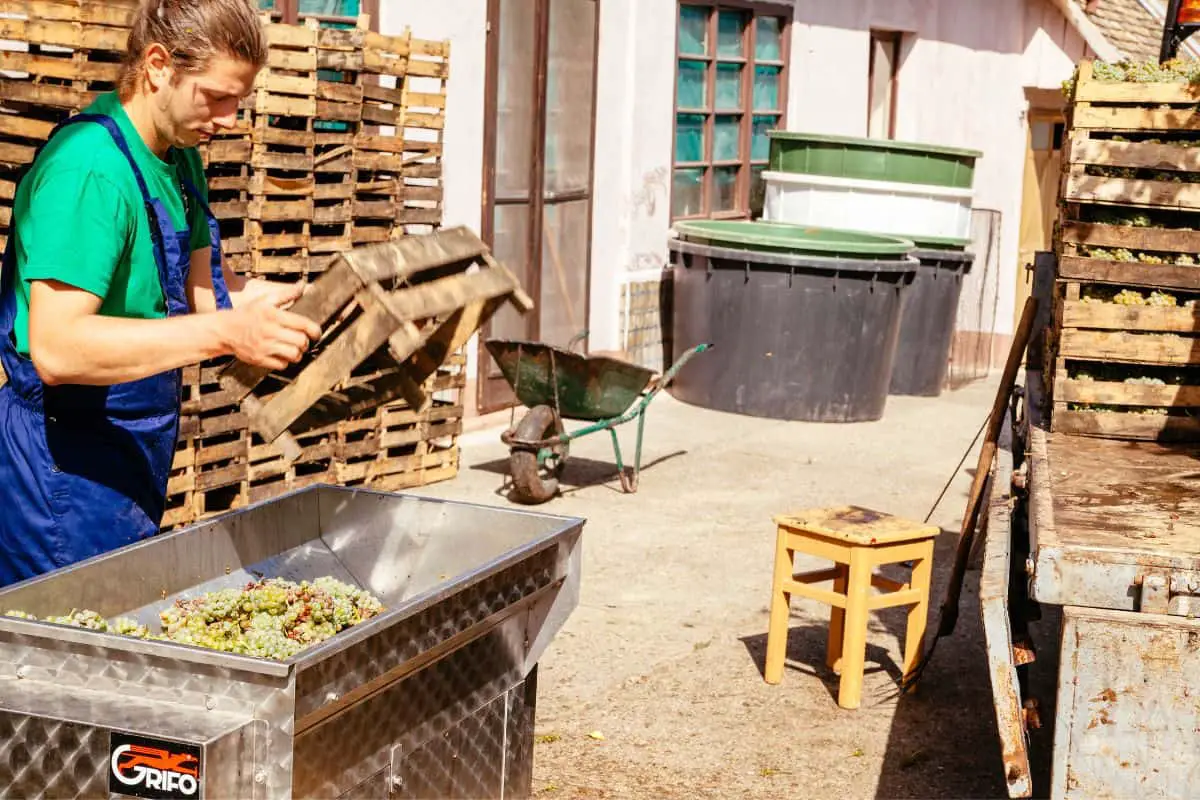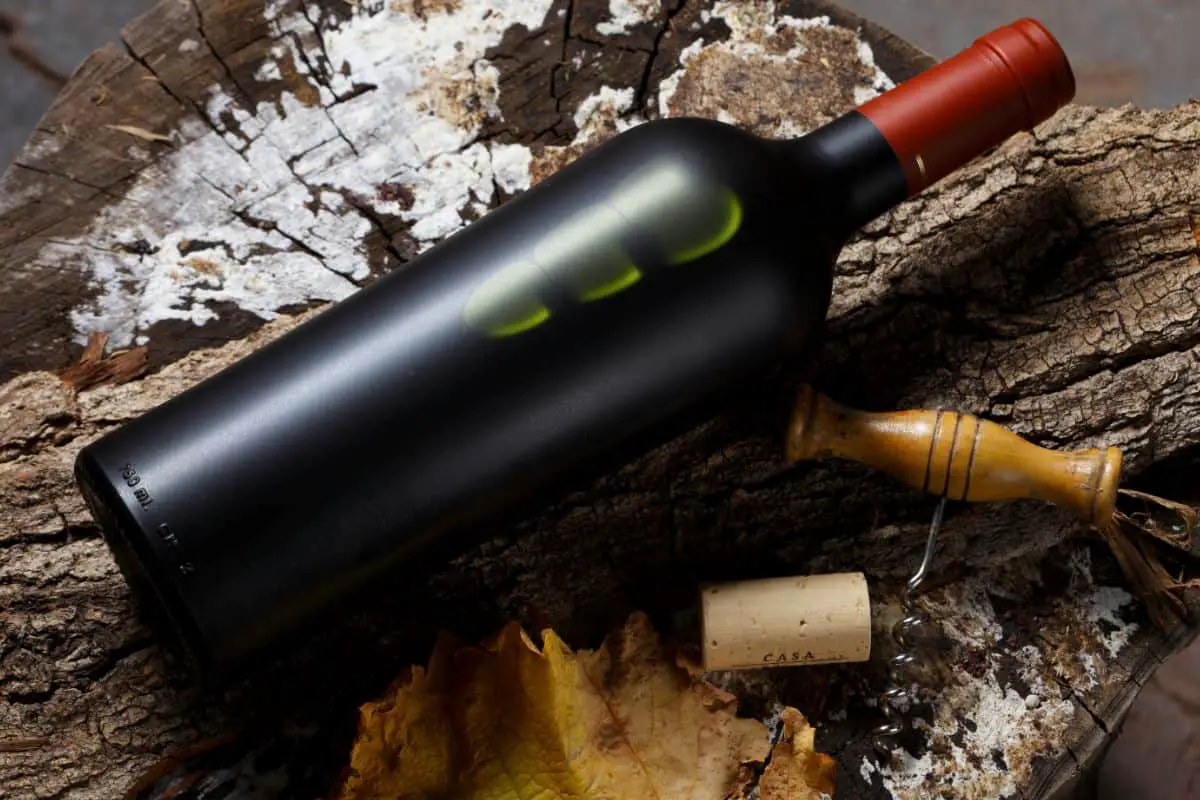Allowing your wine to breathe is a trick commonly used to release some of the beautiful wine aromas.

Good wines only need to breathe for a couple of hours but you do not need to let every wine aerate.
Some younger wines that contain more tannins benefit from being left to breathe for a few hours as this can remove the strong tannic flavors.
Saying this, the length of time that your wine needs to breathe varies with each wine, so we take a closer look at how long you should leave your wine to aerate.
Plus, we also have some handy tips and tricks on how you can let your wine breathe like a pro.
How Long Should You Aerate Wine?
The length of breathing time for your wine depends on the type of wine you have but generally, many younger wines need to breathe between 1 and 2 hours.
This reduces the harsh tannin aromas of the wine and it brings out a gentle velvet texture.
Saying this, if you have a lighter wine or a low alcoholic wine, then it’s fine to let it breathe only for 30 minutes.
Do You Need To Let Your Wine Breathe?
No, you do not have to let your wine breathe, especially not each time you pour yourself a glass.
On the contrary, it takes a fine balance for how much air you should allow into a wine bottle. When wine is exposed to too much air, then this can make the wine undrinkable.
Some white wines can lose all their flavors when they are aerated for too long.
How To Decide If Your Wine Needs To Breathe
Not every wine needs to breathe, and then there are different lengths of time that some wines need to aerate.
Here are a few different methods that will help you decide whether your wine is fine to drink without aeration or you need to allow it to breathe for a couple of hours.
Do Your Wine Research
It’s a good idea to find out a little more about the wine you bought. Many new wines have a label on that will tell you more about the wine’s flavor as well as the aeration time.
This does not just apply to cheap budget wines but also high-end bottles. For both, you want to ensure that you get the best flavor from the wine.
Pour A Sample
A good way to decide whether your wine needs to breathe is by opening the bottle and pouring yourself a little sample.
Smell and taste the wine. If it has an unpleasant aroma similar to burnt matches or rotten eggs, then it is likely that your wine will need to aerate for a little.
Older Vintage Wines Need Less Aeration

There is a popular belief that vintage wines need particularly long to aerate but the opposite is true.
Older wines may, in fact, need to breathe for a shorter period of time because these wines are fragile and the oxidization process can destroy their delicate aroma.
Red wines slowly lose their hue over time. If you have an older red wine that has lost its color, then you should allow it to breathe for maximum 15 minutes.
Aged wines with a bright inky or red hue can be decanted for around 30 minutes.
It’s a good idea to decant all mature wines (wines up from eight years). This helps to remove any of the sediments at the bottom.
Aerate Young Red Wines For Longer
Younger red wines are generally more tannic and they can be quite strong in flavor and smell when you open the bottle for the first time.
Aeration is a great way to allow the tannins to soften. You can give a young red wine a good swirl and then allow it to rest for 20 minutes inside a wine glass.
If you want to drink a couple of glasses, then the best way to let the red young wine breathe is by pouring it into a decanter, and then allowing it to breathe for two hours.
This longer aeration time is needed to soften the overwhelming tannin aromas in the wine.
Let Sparkling Wine And White Wine Breathe For A Shorter Time
As a rule of thumb, sparkling wine and white wine don’t need to be aerated or decanted.
However, there are a number of exceptions to this rule. If your sparkling or white wine smell sulfurous, then it’s a good idea to allow it to breathe for 15 minutes in a decanter.
Some white Bordeaux wine, white Alsace wine and white Burgundy wine often require an aeration period of 30 minutes.
Watch Your Wine As It Ages In The Bottle
Wine is a natural product and it continually evolves, even inside the bottle.
It’s important that you keep an eye on the flavor from the moment that you open your wine bottle until it is empty.
Different Ways To Let Your Wine Breathe
When you let a wine breathe, then this means that you allow oxygen (air) to enter the wine bottle. This helps to bring out all the beautiful wine flavors and aromas.
There are a few different methods how you can aerate your wine in the right way.
Swirl
Just swish your red or white wine around your wine glass. This will speed up the breathing process.
Use A Wine Aerator
Using a wine aerator makes quick and easy work of aeration but they are not expensive, so this option may be only worth it with more expensive wines.
Pour Your Wine Into A Decanter
Pour your red or white winter into a decanter and allow it to breathe for some time before you serve it.
Final Thoughts
Even if you are not a wine pro, it’s essential for some wines to breathe. Young red wines need to breathe for a couple of hours.
Older red wines should only be aerated for a few minutes to ensure the flavor stays consistent.
And white wines as well as sparkling wines usually don’t need aeration.
- How to Learn Wine Tasting: Essentials for Beginners - March 10, 2024
- How to Learn to Like Wine: Cultivating an Appreciation for the Vintner’s Art - March 10, 2024
- Thanksgiving Sangria: A Flavorful Twist to Your Holiday Table - August 27, 2023








